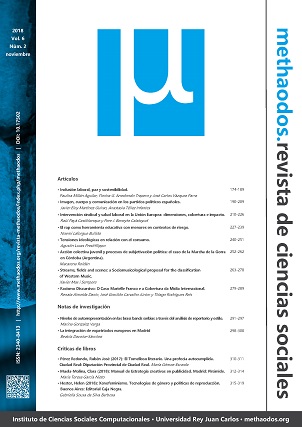Levels of self-representation in Serbian brass bands through the analysis of repertoire and style
Main Article Content
Abstract
Serbian brass bands as the result of cultural assimilations from diverse cultures involved in the Balkan wars are a widespread tradition which can represent many different social agents. Through an analysis of repertoire of bands from different regions it is shown in which ways Serbian history is reflected on the tradition. Moreover, studying different categories of the repertoire of each brass band, it is possible to illustrate how each group choses how to represent themselves depending on the space of performance. Furthermore, I will examine the stylistic differences according to geographical areas and the local history of the region. These aspects determine in which way the bands define themselves.
Downloads
Article Details
References
Anderson, B. (1991): Imagined Communities: Reflections on the Origin and Spread of Nationalism. London: Verso.
Born, G. y Hesmondhalgh, D. (2000): Western Music and Its Others. California, USA: Univeristy of California Press.
Feldman, W. Z. (n.d.): “Ottoman music”, in Grove Music Online.
González, M. (2018): La construcción de identidad balcánica a través de la música. Las brass bands serbias como estudio de caso. Editorial Académica Española.
Hall, S. (1996): “Who needs identity?”, en Questions of identity. Trowbridge: The Cromwell Press Ltd.
Hudson, R. (2006): “Regions and place: music, identity and place”, Progress in Human Geography, 30 (5): 626-634. https://doi.org/10.1177%2F0309132506070177
Markovic, A. (2012): “Brass on the Move: Economic Crisis and Professional Mobility among Romani Musicians in Vranje”, en Labour Migrations in the Balkans: 49–78.
Pettan, S. (1996): “Gypsies, Music, and Politics in the Balkans: A Case Study from Kosovo”, The World of Music, 38 (1): 33–61.
Prévôt, N. (2001) : “La Macédoine en fanfare La Macédoine en fanfare”, Ethnologie Française, 31 (4) : 695-706. https://doi.org/10.3917/ethn.014.0695
Rasmussen, L. V. (1991): “Gypsy music in Yugoslavia: Inside the Popular Culture Tradition”, Journal of the Gypsy Lore Society, 1 (2).
Said, E. W. (2008): Orientalismo. Barcelona: Debolsillo.
Shelemay, K. K. (2011): “Musical Communities: Rethinking the Collective in Music”, Journal of the American Musicological Society, 64 (2): 349-390. http://dx.doi.org/10.1525/jams.2011.64.2.349
Slobin, M. (1992): “Micromusics of the West: A Comparative Approach”, Ethnomusicology, 36 (1): 1-87. http://dx.doi.org/10.2307/852085
Todorova, M. (1997): Imagining the Balkans. Oxford: Oxford University Press.
Turino, T. (1999): “Signs of Imagination, Identity, and Experience: A Peircian Semiotic Theory for Music”, Ethnomusicology, 43 (2). http://dx.doi.org/10.2307/852734
Zaki, M. (2012): “(Re)Creating the (folk music) tradition: The national competition of brass orchestras at the Dragacevo trumpet festival”, New Sound, 92 (November): 58–8. https://doi.org/10.5937/newso1201058Z

